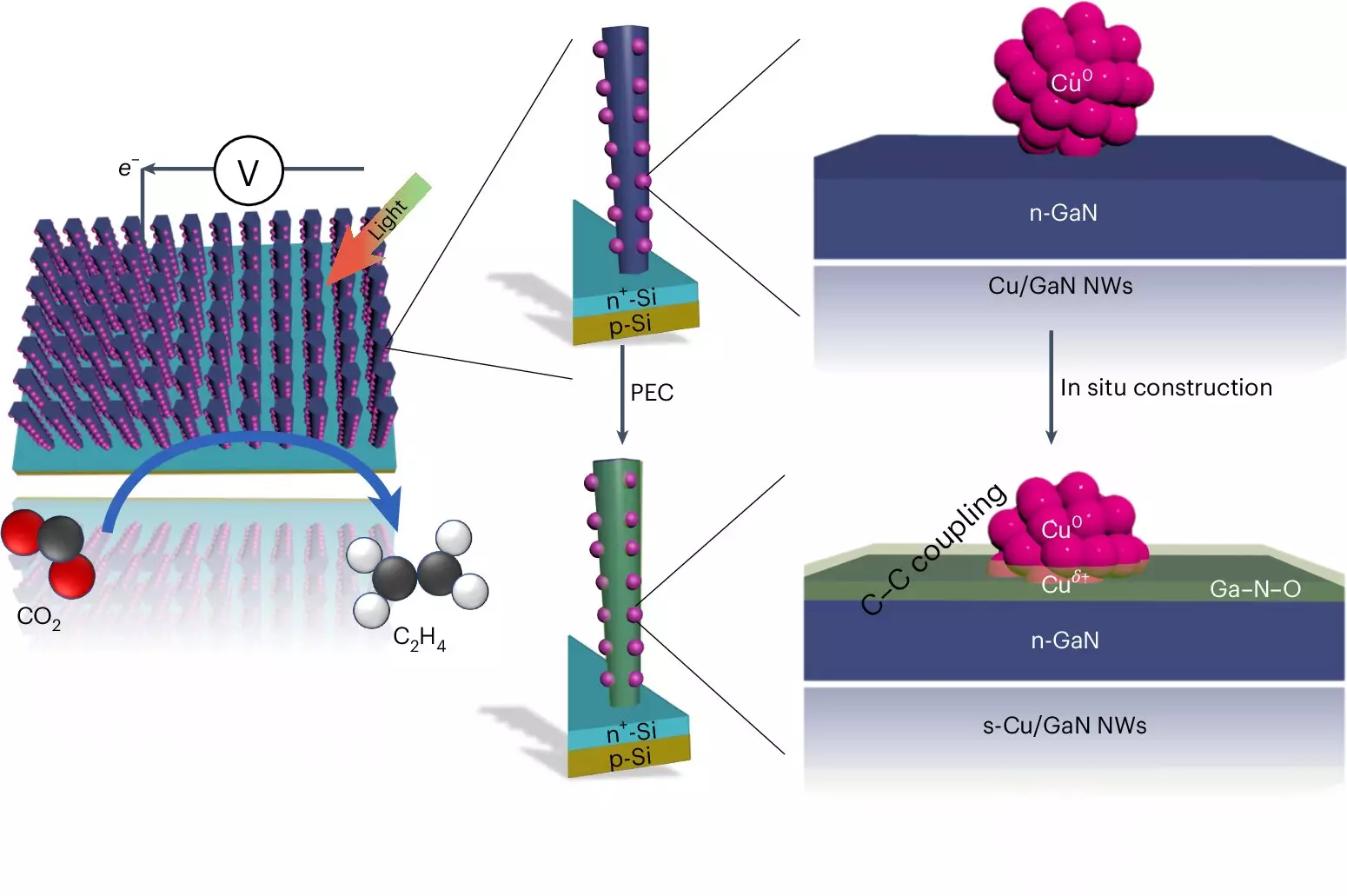As the urgency to combat climate change intensifies, innovative solutions for reducing carbon dioxide emissions are being explored. One revolutionary approach is the development of artificial photosynthesis systems, which mimic the natural process of plants converting sunlight into energy. Recent research from the University of Michigan has unveiled a remarkable advancement in this field— a system designed to efficiently convert carbon dioxide into ethylene, a crucial hydrocarbon used in plastic production. This breakthrough not only showcases enhanced efficiency and longevity but also paves the way for further advancements in sustainable fuel production.
Ethylene stands out as the most widely produced organic compound globally, primarily utilized in the manufacturing of plastics. Conventionally, ethylene is derived from fossil fuels through methods that not only consume significant energy but also generate substantial carbon dioxide emissions. By harnessing an artificial photosynthesis system that extracts CO2 from the atmosphere, researchers at the University of Michigan are providing a viable alternative to traditional ethylene production methods. This not only reduces reliance on oil and gas but also addresses atmospheric CO2 levels—a dual advantage that illustrates the potential of this technology in promoting a circular economy.
At the heart of this artificial photosynthesis system are two distinctive types of semiconductors: gallium nitride nanowires and a silicon substrate. The nanowires, measuring just a few hundred atoms wide, play a pivotal role in absorbing sunlight. When exposed to light mimicking solar conditions, the system generates electrons that facilitate a series of chemical reactions. The process begins with splitting water molecules into hydrogen and oxygen. The nanowires absorb the oxygen, leading to the formation of gallium nitride oxide, while the freed hydrogen becomes a key player in the production of ethylene.
To convert CO2 into ethylene, copper clusters are strategically placed on the nanowires. Each cluster, comprising around 30 copper atoms, excels at capturing hydrogen and interacting with carbon from the CO2 molecules. During the reaction, carbon monoxide (CO) is formed, which then undergoes a coupling process with hydrogen. This intricate reaction occurs at the interface of the copper and gallium nitride oxide, effectively stripping oxygen atoms while replacing them with hydrogen.
Significantly, the research indicates that 61% of free electrons generated by the semiconductors contribute directly to ethylene production—an impressive feat compared to other catalysts, such as silver and copper, which have demonstrated similar efficiencies but require complex conditions and frequently degrade after short operational periods.
One of the notable achievements of this artificial photosynthesis device is its capacity for prolonged operation. During testing, the system demonstrated consistent performance for an impressive 116 hours without significant degradation—a stark contrast to previous systems that could only function for a few hours before deteriorating. Moreover, similar devices tested by the Michigan team have lasted as long as 3,000 hours.
The secret to this superior longevity lies in the synergistic interaction between gallium nitride and the water-splitting process. The oxygen produced during the reaction plays a dual role—improving catalyst performance and enabling a self-healing mechanism that enhances the system’s resilience. As a result, researchers are optimistic about further explorations into maximizing the device’s operational lifespan.
The Michigan team’s work represents a significant milestone not only in producing ethylene but also in the potential to synthesize longer-chain hydrocarbons and liquid fuels, such as propanol. Such advancements would allow existing transportation systems to transition towards sustainability, significantly reducing the carbon footprint of conventional fuel sources. As Bingxing Zhang, the first author of the research, emphasizes, expanding the range of liquid fuel products is a vital goal for the future.
Overall, the advancement achieved by the University of Michigan in artificial photosynthesis exemplifies a compelling intersection of chemistry, engineering, and sustainability. By converting CO2 into valuable hydrocarbons, researchers are not only addressing urgent environmental concerns but also propelling the industrial sector towards more sustainable practices. As this field continues to evolve, it holds the promise of transforming our energy landscape and creating a more sustainable future.

